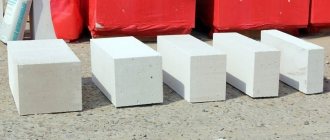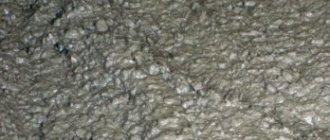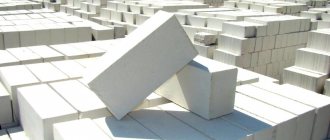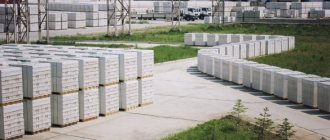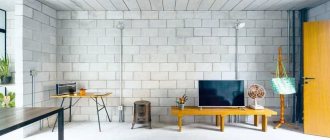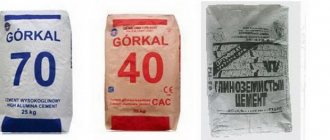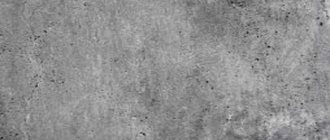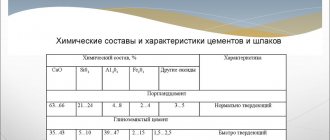Block material made of aerated concrete, the advantages, disadvantages and technical characteristics of which will be discussed below, continues to gain popularity. Many consumers opt for it when looking for wall material for a future structure. To avoid regrets in the future, it is necessary to understand in advance what a gas block is. After all, it will be necessary to build load-bearing structures from it, the strength of which will form the basis of a future home or office space.
What is this
So, gas block - what is it?
It is a type of concrete with a porous structure. To put it more simply, it is a stone of artificial origin that has spherical cells inside.
When choosing such a material, certain features should be taken into account:
- bearing capacity of walls;
- thermal conductivity indicators;
- proportionality of masonry when tying gas blocks;
- methods to simplify all construction;
- parameters of standard gas blocks taking into account the design solution;
- cost of material.
Qualitative characteristics of artificial stone
The marking of aerated concrete depends on physical indicators such as noise absorption, thermal insulation and pore size. At the same time, aerated concrete grade D300 is the most fragile material, but has good heat-protective properties.
Therefore, it is used not only as a filler in frame houses, but also as a finishing material for insulating facades.
- For the construction of one-story houses, the strength of aerated concrete blocks with the D400 grade is sufficient, and for two-story houses, D500 foam concrete is required.
- The most durable of the lightweight foam blocks is considered to be the material marked D600, which is suitable for the construction of walls with ventilation wells.
- All elements of the building, from the foundation to the floors, can be built from ultra-strong structural aerated concrete blocks, grade D700-1200.
Compound
The recipe for gas block material is quite simple. It includes the following ingredients:
- cement composition;
- river sand;
- aluminum powder (used as a blowing agent);
- quicklime.
The feedstock may additionally include ash or gypsum.
Features of lightweight concrete
Cellular concrete is obtained as a result of the reaction between cement and aluminum powder, which, along with sand and other additives, are included in its composition.
The interaction of the reagents forms a foam of individual air bubbles, each of which is covered with a cement shell. The foam is evenly distributed throughout the aerated concrete block, making it light and durable.
Claimed properties
Artificial stone has the following technical characteristics:
- Strength indicator - even the light weight of the stone does not affect its maximum strength. Taking into account the type of concrete, the question “how long can an aerated block withstand?” you can answer this way: the value varies between 1.5 - 3.5 kgf for every square centimeter.
- Easy to process - there is no need to purchase special tools to work with aerated concrete. The material can be sawed perfectly with a regular hand saw; it can be easily trimmed with a gas block grater. After processing, stones of non-standard shapes and parameters are obtained.
- Thermal insulation qualities - blocks of the d500 and d600 brands are characterized by a low ability to conduct heat, which allows the walls to maintain a comfortable indoor microclimate at any time of the year.
- Sound insulation – to the special properties of aerated concrete you can add the ability of the material to dampen extraneous noise. This indicator depends on the thickness of the walls made of aerated blocks in the apartment and, in a sense, on the technology for laying aerated blocks.
- Fire resistance - the material is considered non-flammable. Its fire resistance limit allows objects to be classified into fire safety groups I and II.
- Environmentally friendly - the radioactive background of the material is below all permitted standards; only natural components are used for its production. During operation, the blocks do not emit toxins dangerous to the human body.
- Light weight - a stone whose standard parameters are 625 x 250 x 300, weighs no more than eight kilograms. Moreover, its average density is 500 kg per cubic meter. This feature makes it possible to reduce the consumption of masonry mortar and speed up the pace of construction work.
- Resistance to the influence of the biological environment - even at high temperatures and air humidity, fungus and mold do not form on the surface of the blocks. In terms of this indicator, the material is superior to wood and does not require treatment with antiseptic compounds.
- The shrinkage of the aerated block at the time of drying is no more than 0.5 mm per meter.
- Resistance to frost - measured in cycles and ranges from 25 to 100. With proper insulation, a “dew point” does not form.
- Moisture absorption reaches thirty percent.
Consumers often ask the question: is an aerated block afraid of moisture or not? The answer is simple - external finishing is necessary - this measure will increase the durability of the material.
Cost of aerated concrete blocks
And in conclusion, we will answer questions about the cost of gas blocks. The prices presented are per cubic meter and are current as of early May 2020.
- INSI – 3600 rub.
- Porevit – 3700 rub.
- Teplit – 3150 rub.
- Aerok – 4200 rub.
- H+H – 4400 rub.
- EuroAeroBeton – 4150 rub.
- Sibit – 4500 rub.
- Varmit – 3700 rub.
- GRAS – 3400 rub.
- AeroBel – 3350 rub.
- Itong – 4900 rub.
- Hebel – 4100 rub.
- Teplon – 3350 rub.
The price range is quite significant, and may be due to technological nuances of production. Different ratios of concrete ingredients, different exposure times in the autoclave, due to which the final characteristics of the blocks can vary greatly. Itong is the most expensive here, but blocks of this brand, even with a density of D400, have a strength class of B2.5, while most others have a lower one.
The component composition of the blocks also matters. More expensive lime-cement ones are called gas silicate, and can be distinguished by their white color. Gray blocks, which contain more cement, are cheaper. Aerated concrete, in which cement is replaced with slag or ash, will cost even less.
And of course, the area in which the plant is located matters. The farther the blocks “go” from him, the more expensive you will have to pay for them - no one has yet canceled transportation costs. So, if you want to save money, first of all pay attention to the products of factories that are located in the construction region, and only then to the imported ones.
Types of gas blocks
The material, taking into account the conditions of secondary hardening, is divided into:
- autoclave - the process of synthetic hardening occurs in a special installation, under the influence of high temperature and pressure. The quality of the material increases;
- non-autoclave - hydration hardening occurs under the influence of normal atmospheric pressure. Such blocks belong to grade 2.
Based on the main binder component, blocks are divided into:
- lime - they contain up to fifty percent quicklime. In addition, slag or cement material, gypsum are added to the raw material. The percentage of such additives does not exceed fifteen;
- cement - half of the mass is Portland cement;
- slag - more than half of the raw materials consist of slag mixed with gypsum, alkali or lime;
- ash - half of the feedstock consists of ash of highly basic groups;
- mixed - consist of lime and slag. The composition may contain cement in a volume of 15–50% of the total amount of raw materials.
The aerated concrete block also differs according to the type of silica components:
- made on sand of natural origin. In most cases, quartz is used, but sometimes other types of sand raw materials are used;
- made from secondary products of industrial origin - ash, ferroalloy waste, fly ash.
Forms of block material:
- rectangular - such a gas block is used for arranging load-bearing walls;
- reinforced - used in the construction of ceilings;
- T-U- and U-shaped aerated blocks – reduce financial costs and speed up the construction of aerated block projects.
The division by size determines two groups of material - partition and block for building walls.
The first group includes:
- gas block 50 mm;
- gas block 70 mm;
- gas block 75 mm;
- gas block 80 mm;
- gas block 10 cm;
- gas block 120 mm.
The value of the thickness of the partition material from which non-load-bearing internal partitions are erected is indicated. In addition, a gas block with a thickness of 5 cm can be used as an insulating material for brick walls.
The thickness of the wall options is as follows:
- gas block 18 cm;
- gas block 30 cm;
- gas block 37 cm;
- gas block 250 mm;
- gas block 300 mm;
- gas block 375 mm.
By clarifying the exact parameters of the block material, you can determine how many stones are in one cubic meter. For example, a cube of blocks with dimensions of 250 by 250 by 625 mm has 26 - 27 pieces.
But the length of a gas block of 500 mm and a gas block of 625 mm can be made according to individual orders, and the number of stones will be determined taking into account their width and height.
The main division of blocks into types:
- structural – density is 1,000 – 1,200 kg per cubic meter (d1000 – d1200). The thermal conductivity of the material is at such a level that additional insulation of the walls is not required;
- thermal insulation – d500 – d Thermal conductivity is low. But the strength indicator is such that the material can be used for constructing partitions, insulating objects, etc. The same group should include the d300 block, from which interior partitions are built that do not experience load forces;
- structural and thermal insulation - density equal to d500, d600, d700, d800, d According to experts, the strength of such a material allows the construction of buildings of two and three floors without insulating the walls. This gas block, which complies with GOST, is very popular and can be used for the construction of walls and ceilings, and partitions in rooms.
Myths and reality
Even if there are still a lot of rumors and myths about wood, one of the oldest construction and finishing materials, what can we say about aerated concrete, which appeared relatively recently (about a hundred years ago). He is credited with mythical characteristics with a negative connotation, the most popular of which we will consider.
Myth – a house made of aerated concrete will definitely crack
Yes, with more than sufficient strength, the gas block is unstable to bending deformation, which is why the slightest movement of the base or uneven load distribution provokes cracking of the box. However, in our realities, almost no material is insured against “maybe”; they manage to mess up both with brick and even with monolith. With the difference that categories that are more resistant to mentality and deformation allow certain errors, while a gas block requires careful calculation and a serious attitude to construction at all stages. Mostly, problems with aerated concrete arise due to an incorrectly selected or improperly implemented foundation. When everything is calculated and the technology is followed, the house will stand on a grillage.
buolkoFORUMHOUSE Member
In 2007, I built a semi-detached house from aerated concrete blocks with a total area of 240 m². All work and materials were calculated in good faith on the computer. The foundation was made using the TISE system on piles, with a monolithic grillage 50 cm high on top. To date there have been no problems, I have been living for 12 years and am happy. I want to build another one-apartment house, also from gas blocks.
Myth – aerated concrete is constantly wet
Yes, one of the properties of aerated concrete is good permeability and hygroscopicity, plus, during the season, due to high demand, enterprises release “raw” blocks that have not been allowed to sit for the required period. And where there is high humidity, automatically there is increased thermal conductivity, which negates one of the main advantages of the material. But a large-format box is erected, although in a short time, but not by magic in a few days, especially when we are talking about construction on our own. The aerated block not only readily absorbs moisture, but also releases it no less readily; by the end of the work, the walls will dry out and the humidity will fluctuate within acceptable limits. If in the future, when carrying out facade finishing, the main rule is not neglected - the vapor permeability of subsequent layers should be higher than the vapor permeability of the base. And if it is not possible or for some other reason finishing is not expected in the first season, or even several subsequent ones, you can play it safe and treat the walls with a water repellent.
Myth – aerated concrete still needs to be insulated
Yes, if the task is to build an energy-efficient or even a passive house, even aerated concrete, like any other wall material, will have to be additionally insulated. When it comes to simply meeting the standards for thermal resistance of enclosing structures, a single-layer aerated concrete wall is quite sufficient. With that difference, in Moscow and regions with a similar climate, the thickness of the walls should be greater than in Krasnodar or Sochi, or the density of the blocks should be less. For the middle zone, a standard thermal resistance of 3.2 m² °C/W will be provided by both D400 blocks, 400 mm wide, and D300 blocks, 300 mm wide. And no SFTK or ventilated insulated facade is needed.
Myth – aerated concrete must be finished in the first season
Yes, like any other rough wall material, aerated block needs facade finishing, but, first of all, for aesthetic rather than practical reasons. Let’s not once again cite the “legendary” house in the Baltics as an example, everything is not so rosy with it.
PavelForumHouse Member
A little about the photograph of an aerated concrete house in Riga that is flashing everywhere.
- The house, built in the 30s (more precisely, 1938), is made of blocks with a density of just over 1000 kg/m³. Today, no plant will offer us such density.
- The foundation was the remains of an 18th century church (the depth of the foundation is more than 3 meters, the thickness of its walls is from 1.5 meters!!!).
- Think about what country this house was built in and by whom... Hence the quality of the walls. And the mild Baltic winter...
- It is very difficult to live in the house itself - damp and musty, black fungus in the corners. And outside there are crumbling blocks in small greenish cracks. The other side of the house, by the way, is in much worse condition! I lived in Riga for almost 20 years. I was interested in the house. I spoke with the residents.
But the building is almost a hundred years old, and it is still inhabited, and the problems voiced are, first of all, the lack of normal ventilation, which no one thought about at all in those years.
No one is going to leave walls unfinished for decades, but the horror stories are that in literally two or three seasons without cladding, the frame will crack and fall apart, from the OBS category. Moreover, if brick cladding is planned, it is recommended to leave the box for a while without facade finishing (a year). If you need something more budget-friendly, it is quite possible to save on finishing - when the quality of the masonry is good, you can get by with thin-layer plaster on a fiberglass mesh and painting, or just chamfers with painting. Or even just tiles made of aerated concrete.
KolbasievForumHouse Member
I thought about thin-layer plaster, but didn’t dare to do it myself. But the budget does not allow hiring normal performers. I saw with a hand hacksaw. The saber cannot maintain planes. A lot of dust. I had to make a conductor and adapt a vacuum cleaner. I poured about 10 cm of water into the barrel to bind fine dust. Otherwise, the household vacuum cleaner gets clogged very quickly. The barrel inside is highly electrified, so before emptying it was grounded to a fitting driven into the ground. Before gluing, I remove dust and moisten with Karcher.
PS GB tiles have a hidden advantage: my main wall is 300 mm D400, and the small bonus in the form of some increase in thermal protection was very useful.
Production technology
Let's figure out how gas blocks are made. The components are mixed in certain proportions, the raw materials are poured into special molds for aerated blocks. If the production process involves an autoclave option, then the hardening of the stones occurs under the influence of a temperature regime reaching two hundred degrees and a pressure of 10 - 12 bar. Processing in an autoclave during the manufacture of the block allows the pores to be evenly distributed throughout the entire volume of the stone.
The second manufacturing option is the solidification of raw materials under normal conditions. The quality of such blocks is lower and they cost less.
Popular brands and manufacturers
If you imagine the rating of aerated block material, the following brands are popular:
- poritep;
- betokam;
- EKOTON;
- Build stone;
- vkblock;
- half a block;
- drauber;
- akm;
- ekb;
- chill;
- argo;
- Knauf;
- snonelight.
Among the enterprises producing this material, consumers identify:
- Novotroitsk Argo;
- Zyabovsky;
- Aksai;
- Glazov;
- Buzuluk;
- Liski;
- Old Kupavna.
Production has been established in Kyshtym, in the Urals, in Slantsy, in the Krasnodar Territory, in Klintsy and Yeisk, in Semey, in Gelendzhik, in Nizhny Tagil, in Nyagan, in Ulan Ude, in Mogilev, in Yegoryevsk, in Kropotkino, in Azov.
Mogilev blocks produced on the territory of Belarus are well known for their quality characteristics far beyond the borders of the republic.
Areas of use
This material is used in any branch of the construction industry. Buildings for various purposes are erected from wall aerated blocks. Blocks are considered a convenient and cost-effective material; they allow you to build almost any object in a short period of time.
Load-bearing walls and partitions are built from aerated blocks, and they are used as insulation material. Another area of application is the restoration of old objects, the installation of a second floor from aerated blocks.
The material has good soundproofing and thermal insulation qualities. Aerated block buildings maintain a comfortable indoor microclimate.
Increasingly, block material is being used in a new direction - they are building basements from aerated blocks, laying foundations, laying aerated blocks on edge.
Special mention should be made about private construction. In addition to residential buildings, many consumers are trying to make summer kitchens from aerated concrete blocks, or build attics from aerated concrete blocks over an existing building. It is worth noting that interior walls made of aerated concrete blocks and enclosing structures made of aerated concrete blocks on the balcony are very real elements that can be built with your own hands without any problems. Some craftsmen, with proper skill, are able to make a bay window from an aerated block.
Advantages and disadvantages
Many highlight the following advantages of the material:
- ease of processing even with hand tools;
- aerated blocks, especially stones with fiberglass, are lightweight;
- buildings made of aerated concrete are considered environmentally friendly because the material does not emit harmful toxins;
- objects made of such material are excellent at storing heat. The ventilation installed in the gas block allows you to maintain optimal temperature conditions indoors.
But there are also negative aspects that you need to pay attention to when purchasing material:
- The thermal conductivity index depends on the density of the block;
- the material is not elastic and cracks may appear on it;
- in order to fasten an object to a wall made of aerated concrete blocks, you will need to use special fastening devices for this;
- the material absorbs water, so a vapor barrier will need to be installed. This can be done by priming, plastering and painting aerated blocks;
- gas blocks for interior partitions are fragile and cannot withstand serious loads.
Reviews
This building material is truly considered popular. As follows from numerous reviews from owners, the gas block is easy to use, the price is very reasonable, and it fully justifies its declared qualities specified in the accompanying certificate. The service life of an aerated block is quite long; with proper attention, objects can be used for up to a hundred years.
The porous structure of the block makes it easy to process it with hand materials and hide wiring and other communication lines in the aerated block.
Having a machine for making blocks, it is possible to establish handicraft production of this stone right on the construction site. Naturally, one cannot expect full compliance with SNIP, but such material will be quite suitable for outbuildings.
Parameters of foam concrete products
A significant part of the manufacturers of cellular concrete for the construction of individual objects, among other services, offers the production of unique building materials at the request of customers.
But the range of standard sizes available on the market is suitable for the construction of most projects.
- For wall structures and floors, blocks up to 625 mm long are available for sale.
- Artificial wall stone is found with a height of 200-300 mm, with a thickness of 200 to 500 mm.
- The optimal options for solving specific problems can be selected from gas-block parts with parameters 250-500 by 75-175 mm.
There are bowl-shaped foam block products on sale that are used to construct door and window openings. They are also used to form lintels that strengthen the building structure.
To determine the load on the foundation, you need to multiply the volume of the wall structure by the density of the material. The result is a mass of wall or partition, which turns out to be lighter than a similar option made of brick or a regular concrete panel.
